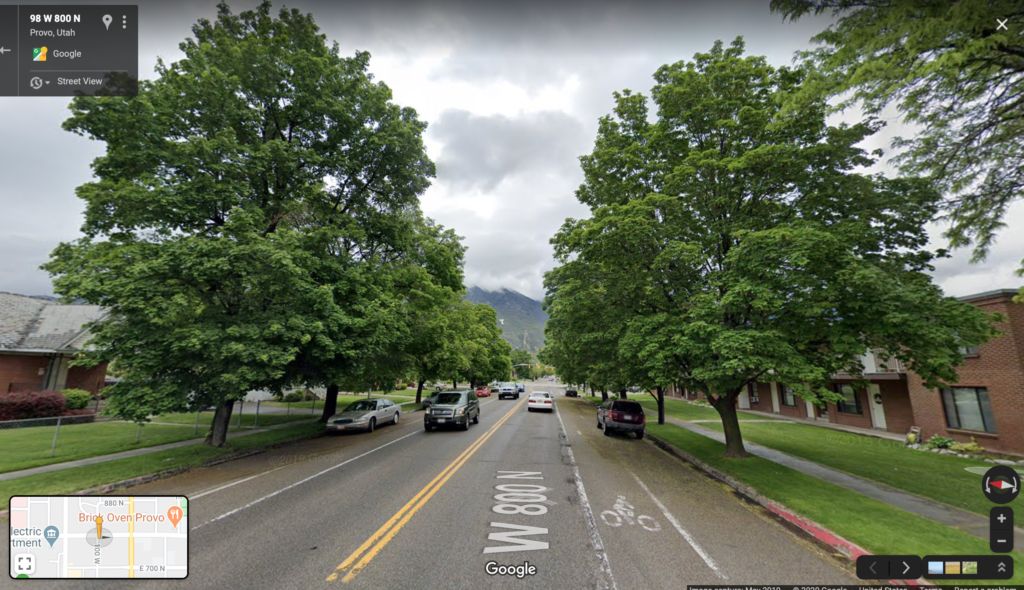
At Provo City’s Transportation Master Plan Open House held on February 20, 2020, the Provo City Public Works department unveiled its plan for Provo’s streets. It included a $75 million dollar widening of 820 North from Geneva Road to University Avenue.
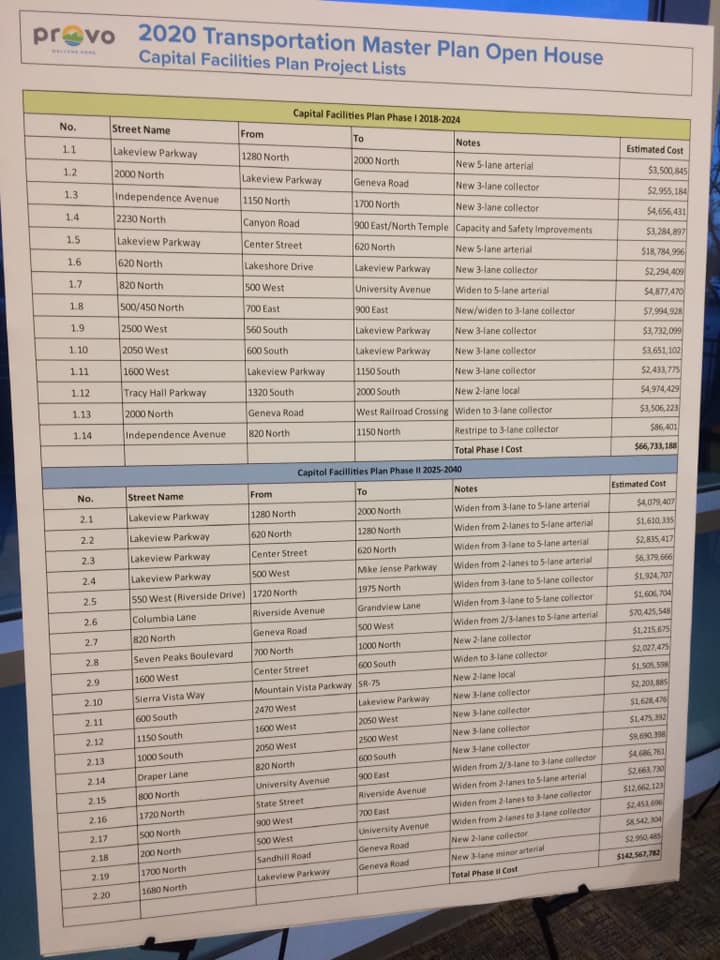
The plan to widen 820 North from two lanes to five is an unnecessary and unwise expense of our precious transportation funding and harms our community.
Financial Costs
Up-front Costs
$75 million dollars is an enormous amount of money. It’s more than Provo City’s annual General Fund Revenue ($67m), more than the cost of the new Provo City Hall ($65m), more than the new Provo Airport ($40m), and enough to fund the entire Provo Police department for nearly four years (at $18m per year). For a 2-mile stretch of roadway, we’re looking at $38 million dollars per mile. The American Road and Transportation Builders Association says that building 6-lane interstates costs around $10 million per mile in urban areas. $38 million per mile is an outrageous expense. And this single road widening project costs more than all of the planned roadway projects in Phase I of the Master Plan combined.
Why does this project cost so much money? Largely because of the buildings along 820 North Provo City will have to purchase and demolish.
Increased Maintenance Expenses and Decreased Property Taxes
Road widening projects are often a lose-lose-lose financially because not only do cities pay massively up front to widen the road, but they also are saddled with increased maintenance costs of a larger road, and decreased property taxes as property-tax-producing buildings are replaced with asphalt that doesn’t pay any tax.
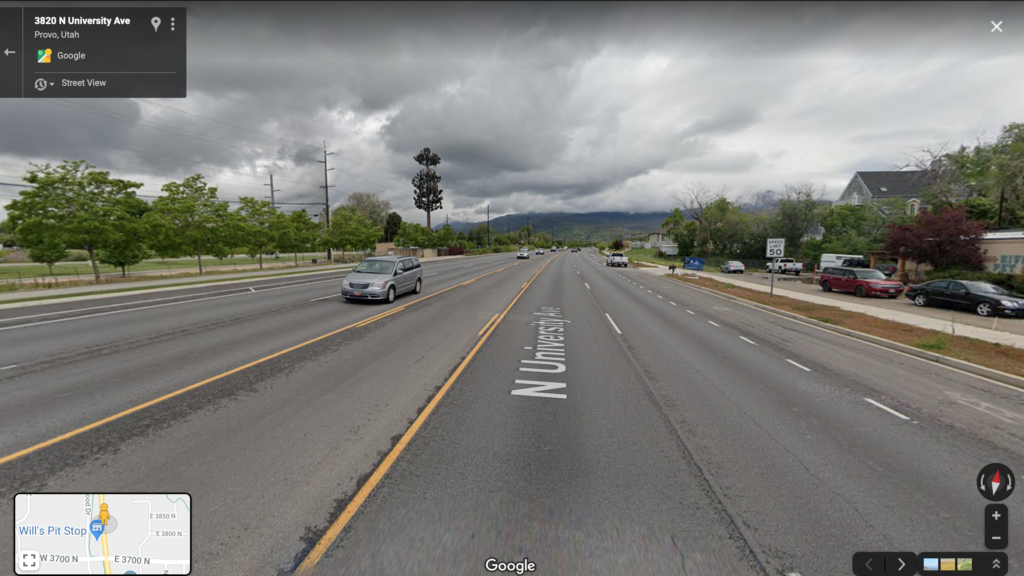
Social Costs
Car Crashes
Wider roads bring more cars and higher speeds. More cars and higher speeds bring more crashes.
Check out UDOT’s map of crashes in Provo for an example. Most of the crashes in Provo happen on large roads with more traffic volume and higher speeds. By widening 820 North from three lanes to five, history indicates that we will have more injuries and fatalities on that road. And with hundreds of schoolchildren at Freedom Preparatory Academy and Ivy Academy on this road, this is not something we should tolerate.
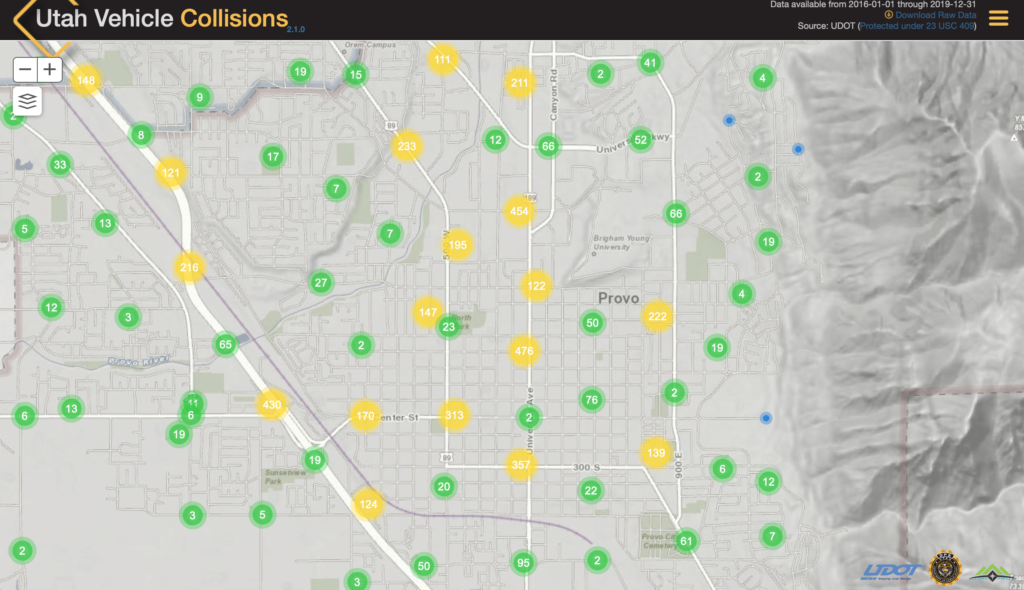
A Community Barrier
When is the last time you walked across a wide, high-speed road? It’s probably been a while. Most of them are unpleasant to walk across by design–they limit the number of pedestrian and bike crossings to keep people out of the road and cars flowing through quickly.
Take the new 300 South for example. Though safer and more attractive than the road was before, it is still a barrier between Maeser neighborhood residents. The “No Pedestrians” sign in the top right corner shows you the intent–to funnel pedestrians to a select few crossings so that cars can drive quickly through the area. On a side note, University Avenue downtown is one of the few examples of a wide, fast road with ample pedestrian crossing points.

Is it Actually Needed?
Traffic Counts and Road Capacity
Provo City Engineering says that 820 North widening is necessary because of how many cars drive on that road. Does their math add up?

- 820 North from Geneva Road to 500 West gets 9,200 average daily trips at the busiest section and has decreased from a peak of 9,300 in 2003
- 820 North from 500 West to University Avenue gets 12,000 average daily trips at the busiest section near Utah Valley Hospital
So what we need is a road that can carry 12,000 cars per day. The Provo City Transportation Master Plan says that a three-lane road can carry 16,000 AADT on a road with “moderate conflicts” (driveways, left turns, and those pesky people walking and biking). So a three-lane road is the fiscally responsible choice for our needs.
However, Provo City is planning to go all-in on a $75m five-lane road designed to carry 35,000 cars per day. That’s right, we are about bet $75 million dollars of taxpayer money against induced demand, hoping that somehow Provo City is the exception to this rule. This better be a joke.
The 2018-2019 Provo City Council said that our city government should budget to community priorities. This $75m road widening project shows exactly what our top priority is–the uninhibited rapid flow of cars through our neighborhoods.
What should we do instead?
Provo City engineers (and some frustrated peak-hour commuters) say that 820 North is “too congested”. Instead of going all-out on a $75m five-lane road, why not first make incremental, inexpensive changes to increase efficiency?
Remove On-street Parking, Restripe to Three Lanes
Here’s an easy one. The section of 820 North at the south entrance of IHC’s Utah Valley Hospital (Provo’s second-largest employer and a large peak hour traffic generator) doesn’t have a left turn lane. Instead, it has on-street parking. This is silly. Why not remove on street parking and restripe to include a left turn lane into the hospital? While biking and walking past, many of us have seen cars backed up here as they wait for someone to turn left into the hospital driveway.
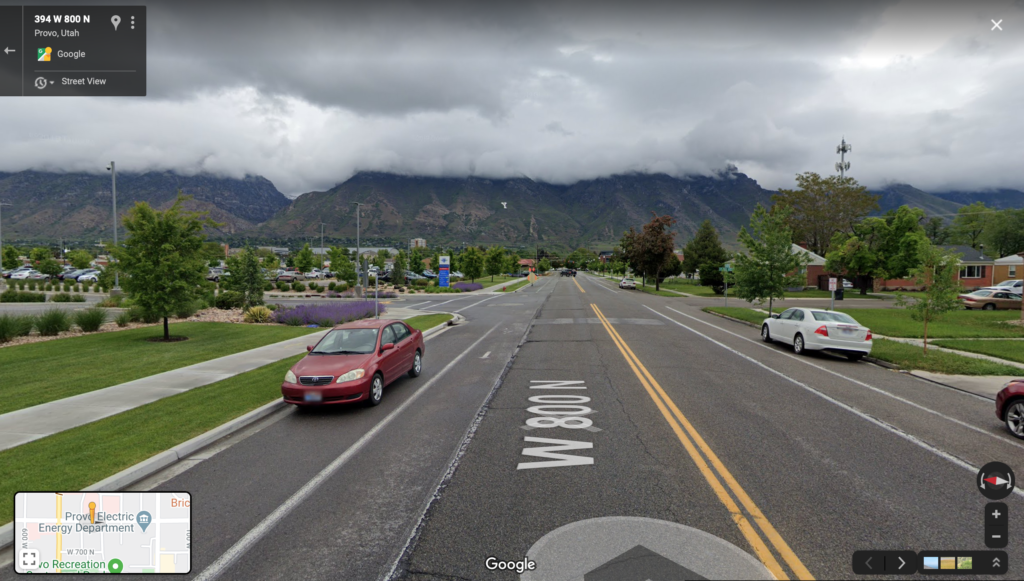
We’re willing to bet restriping four blocks of roadway will cost less than $75m; more like tens of thousands of dollars. There’s some free consulting for you, Provo City. We don’t need payment, just a promise that the 820 N bike lanes will be kept.
Get Full Value from Independence Avenue
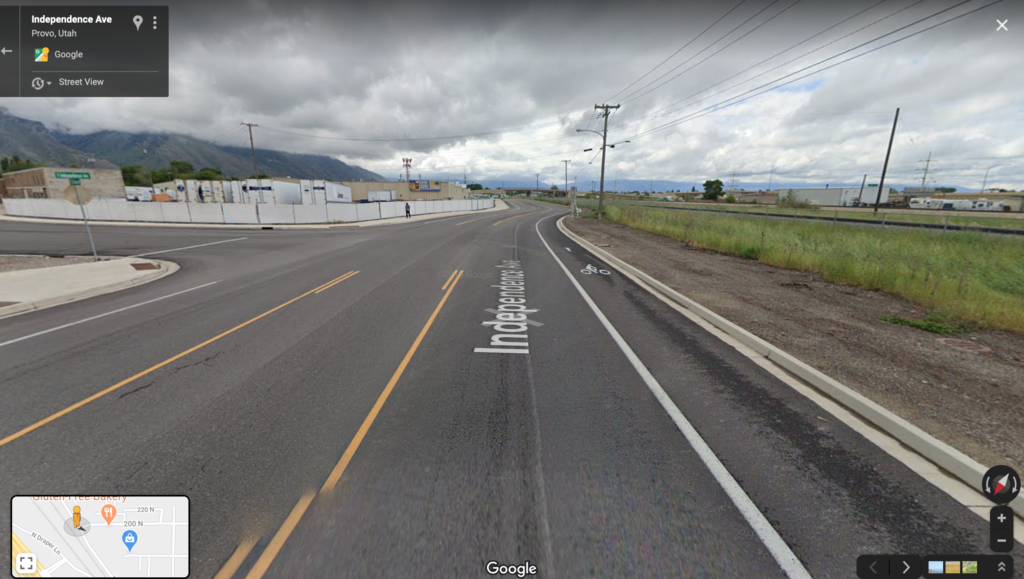
Independence Avenue is a fast and underutilized road (just 2k trips per day) that spans Center Street to 800 N without a single signalized intersection. Design changes should be made to make it easier for drivers to get from the Center Street I-15 ramp eastbound into Provo onto Independence Avenue.
A New I-15 Interchange at 820 North?
UDOT is now undergoing studies to determine if there is a need for an interchange between Center Street and University Parkway, and, if so, where it should go. No decision has been made yet. However, Provo City Engineering indicates that it will pursue the $75m 820 North road widening project regardless of a new interchange or not. This expense is unjustifiable.
And if UDOT were asking for BikeWalk Provo’s opinion, this is what it would be: we don’t want or need another interchange. It does not serve our community and only makes it easier for us to leave to shop, work, and contribute elsewhere. If you’re set on forcing one on us, 820 North is not the place for it. It’s just eight short blocks away from the Center Street exit and nowhere near halfway in between Center Street and University Parkway.
Build More East-west Access Over Time as Needed

If the real problem is east-west access, there are better solutions. The biggest obstacle to the smooth flow of automobile traffic are passing freight trains. UDOT apparently recognizes this and is considering building a bridge over the railway lines at 500 North. Given the location of Provo High on the west side, a bridge connecting 1460 North to the west side makes even more sense. Connecting 820 North to this crossing via the North Independence Avenue frontage road might be part of this network. Such a solution would help spread out east-west traffic and not require widening of any streets and the associated downsides for neighborhoods impacted. East-west traffic would be distributed among a variety of streets: 820 North, 500 North, and (to the south) Center Street, 600 South, 920 South, the 500 West underpass, the new Lakeview Parkway, and (to the north) 1460 North and 2000 South in Orem.
Conclusion and Invitation
Provo City, let’s use our precious transportation dollars wisely on things that will save lives and make Provo a more pleasant place to live, not squander it on an unjustifiable, unnecessary, and unwise $75m road widening project.
If this is something you do not support, please let your city council representative know right now! Email all of them at council@provo.org or contact them individually here.
For more info about how road widening projects don’t solve congestion, see these links:


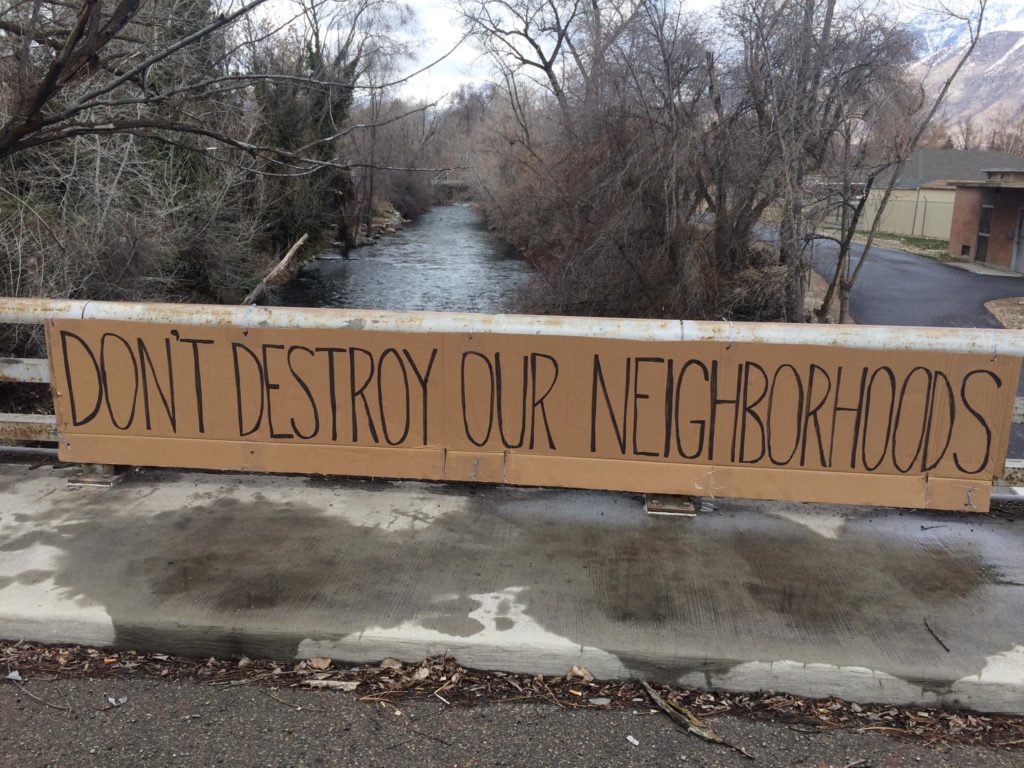
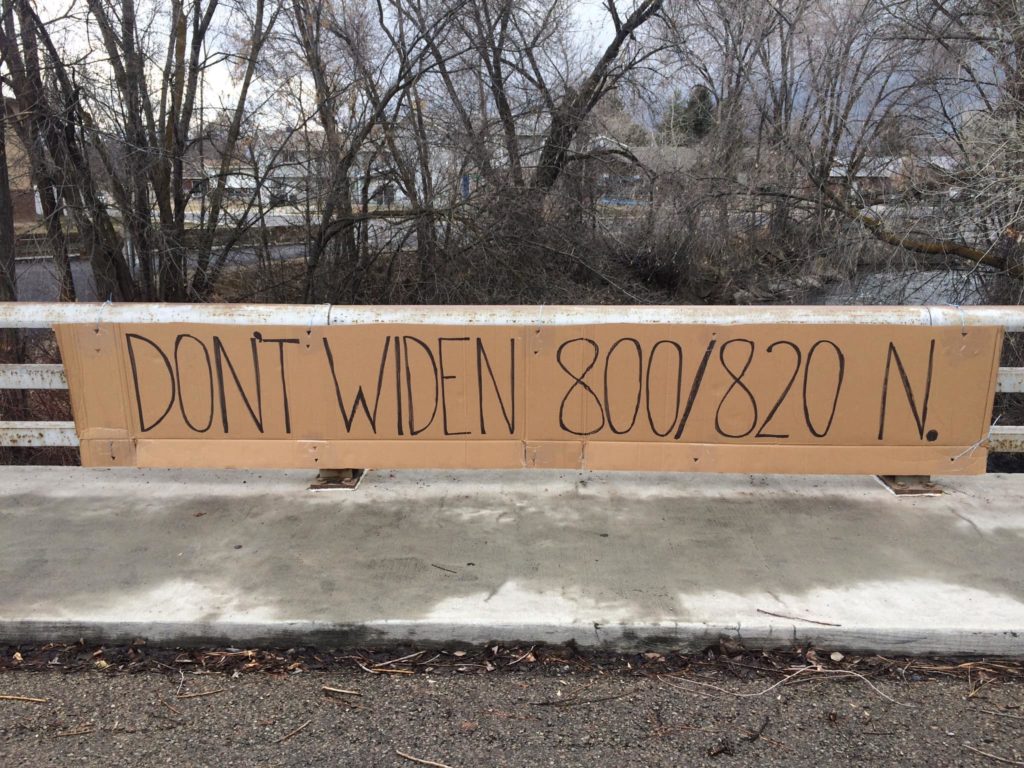
Amen! I couldn’t agree with this well-written article any more. The arguments are sound and are based on good data observations. I really hope Bike Walk Provo has some good contacts with staff at the city. This needs to be addressed. Ruining the corridor’s safety, walkability, and bikeability to accommodate some peak period congestion is absolutely misguided. Even with the peak hour counts, the average volume over the course of a day doesn’t come close to justifying an expansion, let alone for a price tag like that. Unconscionable.
Great work on this article.
I find it incredibly hypocritical that the people advocating for expensive and disruptive traffic reworks are suddenly against expensive traffic reworks.
First, yes, the price tag is too expensive, but that’s whenever the government tries to run things. Second, the argument that having another highway ramp is a bad idea because “only makes it easier for us to leave to shop, work, and contribute elsewhere” is ludicrously stupid. Provo doesn’t have everything and not everyone can work in Provo.
Finally, I bet there will be some sort of shoulder or bike lane, and there are definitely going to be traffic lights where pedestrians can cross, so to try and argue that a road shouldn’t be widened only because a few people are negatively impacted is also a terrible argument. What about the destroyed buildings? Why not talk about the ethical ramifications of the city knocking down people’s houses?
Provo BikeWalk doesn’t have the best interests of the citizens and shouldn’t be talking when they keep pushing for more road construction, but I do agree that this is insanely expensive and the government will definitely ruin it (look at every other project in Provo right now.)